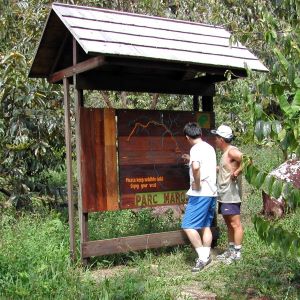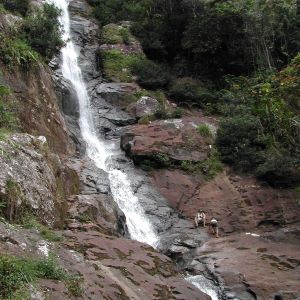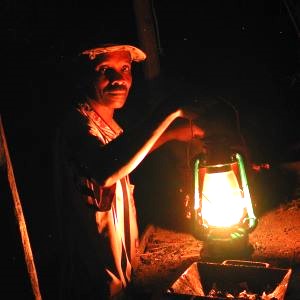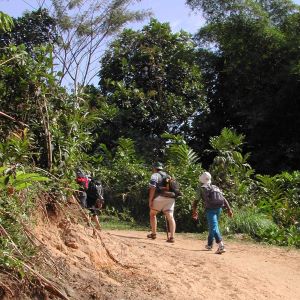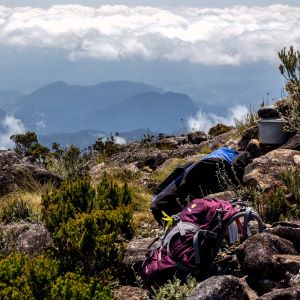Logistics — Trip Planning
Planning a multi-day trek into Marojejy may seem a bit overwhelming and leave you with a lot of questions. Here are a few tips and suggestions that visitors have found useful in the past. If you still have questions, please don’t hesitate to ask: info@marojejy.com.
Guides/Cooks/Trackers/Porters
A guide is required for all trips into the park; cooks, trackers and porters are optional. When considering whether to hire cooks, trackers or porters for your trek, remember that times are tough in the villages now, and the money you spend employing people will help them immeasurably and be very much appreciated. Your guide, along with the cook and tracker, will stay with you throughout your trip, but porters return to their village and do not spend the night in camp.
Entry Costs
Park entry and guide fees must be paid at the visitor center in Manantenina. Only cash (in ariary) is accepted. Current fees are listed here.
Transportation from Sambava
There are several options for getting from Sambava to the park visitor center in Manantenina:
- taxi-brousse (Antanifotsy northern bus station in Sambava, from 3 am to late in the afternoon, 3-4 hours, crowded, unreliable, uncomfortable — but cheap and local!)
- private taxi (bargain the Atos cars or any taxi in town; cost should be around 60€/trip)
- private 4WD for around 75€/ride
The road from Sambava to Manantenina (and all the way to Andapa) is paved and in good condition.
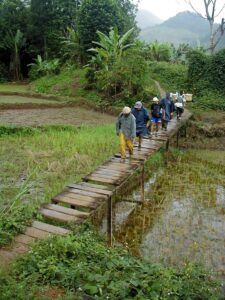
Places to Stay
In Sambava, the Orchidea Beach 2 is the nicest hotel, directly on the beach with beautiful gardens, but it is also the most expensive choice. Another good choice is the Mimi Hôtel which is cheaper and very friendly. It is downtown and can be crowded, but it is clean with a big restaurant and has a great “salon de thé” (informal café). This latter is also a center of information about the area and especially about Marojejy. The owner, Mr. Bruno Lee, is as passionate as we are about the area and is one of our best friends in the country.
If you want to stay closer to Marojejy, Flavien’s Farm is only 1.5 km from the visitor center in Manantenina; a tent, mattress and pillow are provided. Despite the sudden death of Mr. Flavien a few years ago, the place is still open. It’s basic but beautiful and genuine, and Flavien’s wife is a very friendly host. Be sure to ask for prices before you start your stay. Many guides know the place; even at the visitor center it’s possible to book a stay there.
Banking
Sambava has numerous banks that accept Visa, and there is one that will accept MasterCard. Andapa, Vohémar and Antalaha also have banks, although not as many. All four towns have ATM machines. Keep in mind that only cash is accepted for paying park entry fees as well as for paying guides, porters, cooks and trackers.
Food & Water
No food is available for purchase once you’re in Marojejy National Park, so you will need to buy everything ahead of time. Plan on spending a couple of hours to shop for food (for yourself and for the guide and porters if you opt for that choice). Sambava is the best place for shopping with lots of stores and markets. Make a short list with some basic menus so you don’t forget anything. See a suggested food list here.
Good water is piped into all three camps and the trail crosses numerous streams so there is no need to bring in bottled water. However, as everywhere these days, filtration and/or purification tablets are always recommended before drinking.
Gear to Take
For the trail into the park, good walking shoes are necessary as the trail is full of roots and can be slippery, and there are often leeches. (You can add sandals for around camp if you like.) Other essentials are rain gear, sun protection (cap/hat, sun cream), insect repellent, some warm clothes for cool evenings, a light sleeping bag or sleeping bag liner (blankets and sheets are generally provided in the cabins, but they may not be so clean), and a lot of plastic bags to protect important things from rain and humidity. See a more complete packing list here.
Extra Luggage
You can leave extra luggage that you don’t want to carry up the trail at your hotel in Sambava or — even easier and safer — at the visitor center in Manantenina which has a special room just for that purpose, complete with a signed inventory book.
Typical Itinerary
This is the standard itinerary for a 5-day / 4-night trek all the way to the summit. It is possible to do it in four days by removing Day 4, or you can make it more leisurely by adding days at various camps.
Day 1: Once you’ve arrived in Manantenina at the Marojejy National Park visitor center, meet your team (guide/cook/porters) and start the walk to Camp Mantella (8 km, 350 m elevation gain, allow 4 hours — it’s not a difficult trail but it can be hot and humid). Lunch at Camp Mantella. In the afternoon take a short walk to the Cascade de Humbert. Later, take a night walk (if allowed), then have dinner. Night at camp in shared bungalows (fully equipped but you may prefer to take a light sleeping bag or sleeping bag liner).
Day 2: Hike to Camp Simpona (800 m elevation gain, only 4.4 km but really steep after Camp Marojejia, allow all day to do the walk). Take your lunch to eat along the way. The trail takes you through low, middle and high altitude primary rain forest with many changes in vegetation, and there’s always the possibility of seeing Silky Sifakas as well as Bamboo Lemurs, White-fronted Brown Lemurs, Red-bellied Lemurs and many birds (couas, ground rollers, vangas, flycatchers). Dinner and night at Camp Simpona; night walk (if allowed and depending on the weather).
Day 3: D-Day! Wake up early (around 5 am), have a good breakfast and start the ascent to the summit. It’s not far (2.3 km) but very steep (approximately 900 m of elevation gain to the summit). Be ready to use your hands to grab roots and trunks; it’s not easy and if the weather is bad it’s simply impossible for security reasons as the trail becomes a river. But if you are lucky, you will be rewarded with amazing scenery. High in this extraordinary world of miniaturized alpine vegetation, you will have 360° views of the Indian Ocean and the high mountains of the island’s interior. Head back down to Camp Simpona for lunch and a short rest; then in the afternoon hike down to Camp Marojejia (2.4 km, 2 hours). The way down can be hard on your knees and ankles, and it can be very slippery! Dinner and night at camp.
Day 4: A day of rest or a few walks in the area. This is a perfect time to look for the Silky Sifakas and spend some quiet time watching their behavior. Another worthwhile walk is the trail to the rare Takhtajania perrieri trees (belonging to an ancient plant family, the Winteraceae — this species had been thought extinct until it was rediscovered in 1994 in Anjanaharibe-Sud Special Reserve, and then later here at this spot in Marojejy). Lunch, dinner and night at camp.
Day 5: Walk back to the village of Manantenina.
